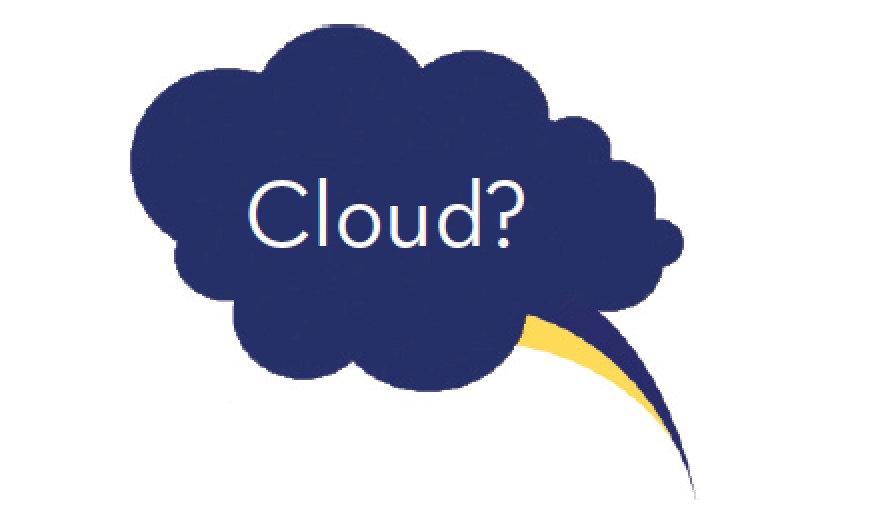
02 Aug So you still want to be a CIO?
Posted at 00:00h
in Government, Growing Companies, Health & Community Services, ICT + DIGITAL STRATEGY, Local Government, Uncategorised, Utilities
Know more of our DIGITAL & ICT STRATEGY capabilities.
The Reflective CIO – So you still want to be a CIO?
Welcome back! I figured it was about time to follow up on my original blog. Last time I discussed six time-tested observations I have made over fifteen years as a CIO. This time I thought I’d offer my perspective on a couple of topical subjects:
· The evolving role of the ICT Organisation
· The evolving role of the Chief Information Officer
You might believe that the two subjects are intrinsically linked and I would agree but I would suggest that the linkage will be radically redefined over the next couple of years.
1. The Evolving Role of the ICT Organisation
First off, what are the main drivers for change? Well that might include:
|
· Increasing the focus on business improvement
|
· Freeing up scarce resources
|
|
· Reducing the costs of running the business
|
· Gaining access to a wider pool of capability
|
|
· Refocusing on core business activities
|
· Maximising profitability
|
|
· Improving service quality
|
· Achieving profitable growth
|
|
· Differentiating products/services
|
· Increasing customer self-service
|
|
· Reducing risk
|
· Increasing customer loyalty
|
At the same time you need to respond to emerging trends and realisations:
ICT Commoditisation
Let’s start with a clear definition. I like the definition provided at www.BusinessDirectory.com – “Almost total lack of meaningful differentiation in the manufactured goods. Commoditised products have thin margins and are sold on the basis of price and not brand. This situation is characterised by standardised, ever cheaper, and common technology that invites more suppliers who lower the prices even further.”
That same definition that applies to products can be applied to the services that are associated with those products. Hence the trend in organisations to divest those services which have traditionally formed the backbone of the ICT Organisation.
BYOD – Now-Generation Outsourcing
An appropriate response to Gen Y and Gen Z consumers (i.e. staff and/or customers) is to let them redefine ICT as we know IT. The hardware is now user defined and supplied. The software and operating system is outsourced and managed over the cloud and Apps are readily available to download to devices of their choice.
In this scenario, the potential responsibility of the ICT Organisation or entity becomes that of providing secure (i.e. portal) access and facilities to update corporate information. BYOD is not without its challenges and it needs to be carefully planned and executed (see 10 Steps to a Successful BYOD Strategy)
Customer Self-Service –ultimate Business Process Outsourcing (BPO)?
An undeniable trend is that of customer self-service. How can it be possible that you can get customers to answer their own queries or choose their own product, at their own expense, in their own time? And there’s more: they can process their own payment, up front, and even make their own arrangements for delivery. Yes and we will rate those businesses very highly!
The world is changing!
Strategic Sourcing
Whereas organisations were once faced with two primary options:
a. In-house – The generally low value, low cost option
b. Outsourced – The generally higher cost, higher value option
There is now a multitude of variations available including:
c. Sole-Sourcing – Outsourcing to one principle vendor
d. Multi-Sourcing – Outsourcing to multiple vendors
e. Co-Sourcing – Partnering with a firm that employs staff to meet your long term needs
ICT as a Service
With the emergence of the cloud, a proliferation of ‘ICT as a Service’ variations have emerged providing choices to organisations. These include:
a. Software as a Service (SaaS)
b. Infrastructure as a Service (IaaS)
c. Platform as a Service (PaaS)
d. And other variations are emerging such as Data Centre as a Service (DCaaS).
 The theme of ICT as a Service features throughout the Queensland Government ICT Strategy 2013-2017 http://www.qld.gov.au/dsitia/assets/documents/ict-strategy.pdf and increasingly of those in other jurisdictions.
The theme of ICT as a Service features throughout the Queensland Government ICT Strategy 2013-2017 http://www.qld.gov.au/dsitia/assets/documents/ict-strategy.pdf and increasingly of those in other jurisdictions.In essence, these services provide for organisations to procure ‘turn-key’ solutions on a regular (eg. monthly) subscription basis. As a consequence the assets remain the property of the service provider as with the responsibility to apply upgrades and refreshments over the contracted term.
In some cases, these services can also be integrated with buy back and leasing arrangements to facilitate flexibility with financing and for those with existing assets.
The Overcoming of the ICT Stigma
Fairly or unfairly, many ICT Organisations carry a reputation for underperforming and failing to deliver business value. Some are judged to be expensive and lacking in capability and frequently external service providers are viewed through rose coloured glasses.
Implications for the ICT Organisation
When you add it all up, it would seem that the writing is on the wall for the ICT Organisation. Indeed, it’s fair to say that the writing has been there for some time. Certainly, as a CIO I have been presenting that message to my teams since at least early 2000. As I look back now, those teams bear very little or no resemblance to the teams of today. On and off-shore outsourcing and more recently the cloud, have played a major part in redefining them.
In Gartner’s IS Lite publications from 1999, they have espoused the virtues of a slimmed down IS/ICT organisation. Much of that work continues to be relevant today. However, things look to be destined to move to yet a new level. I would expect to see:
a. Acceleration of the slimming down of ICT organisations
b. The emergence of new governance structures to accommodate what I refer to as ‘External Trusted Advisors’ (ETAs)
c. Further divestment of ‘demand-side’ responsibilities i.e. some aspects of architecture and strategy development, business enhancement (e.g. project management) and technology advancement (e.g. prototyping)
d. Emergence of new roles and capabilities to generate business value in areas such as data analytics, open data, business intelligence, social marketing etc.
They have been saying that the “mainframe is dead” as long as I can remember. The reality is that they are still around but their role that has changed. Likewise, ICT organisations can survive but not in their present form. How will you and your organisation be impacted:
· What’s your value proposition?
· Are you relevant?
· What differentiates your services from those of others?
If your organisation has the right answers to these questions, you might survive and even prosper.
So what will this mean for the staff of the ICT organisation? Well, the technical skills will still be needed but those opportunities will mostly be with ICT Service Providers (SPs) including Cloud SPs. There will continue to be a place for high value capabilities including vendor management, strategic planning, relationship management and portfolio management. Otherwise, it will primarily be those occasional bad experiences with vendors that will slow down the inevitable transition to outsourcing and particularly ICT as a Service.
2. The evolving role of the Chief Information Officer
So, with the prospect of his/her empire crumbling, will “CIO” finally stand for “Career Is Over”? Well, in some cases the answer is yes. For others it will depend on two main factors:
· How progressive is the CIO?
· How aligned is the CIO with the CEO?
Progressive CIOs will be reflecting on this blog as confirmation of the career development strategy that they already have in mind. Others might re-think theirs and start getting on board. The remainder I will call Blue Sky CIOs – because they see no room for the cloud – are most likely to dismiss the scenario I’ve outlined as being unrealistic. Well, to each, their own. What is for certain is that the role of the CIO is evolving. What is equally certain is that the role is evolving in different directions. These include that of:
· The Chief Digital Officer (CDO)
CDOs will typically have experience with digital technologies, e-commerce and digital transaction processing, social media and online marketing. They will be concerned about how digital changes marketing, recruitment, procurement, sales and finance. They will be heavily involved in data analytics and in employing Business Intelligence and influencing business strategy to adapt to the Digital Age. The CDO’s focus is customer-focused (front end) technologies.
· The ‘Traditional’ CIO/CTO
CIOs/CTOs toil to keep leading companies abreast of cumbersome, enterprise-wide technology upgrades and efficiencies – virtual servers, enterprise resource planning (ERP) and IT infrastructure of all kinds. The domain includes the maintenance of Enterprise Architecture, policies and standards was well as traditional ICT services such as Desktop support, telecommunications management, applications development. As these services increasingly become the domain of external service providers over the cloud, the role will become less relevant.
· The ‘Hybrid’ CIO
The ‘Hybrid CIO’ reflects the evolution of the CIO as a business leader, tasked with leading business transformation with equal focus on business process optimisation, information exploitation and technology innovation. In the scheme of things, this will result in the technology taking a back seat with emphasis switching to stakeholder management, vendor management and cloud service brokering rather than ICT service delivery. Business Process Management and Data Analytics (as with the CDO) will be at the forefront.
· The ‘Virtual’ CIO
It’s also worth contemplating the role of the ‘Virtual CIO’. For SMEs unable to retain a permanent CIO and for larger organisations requiring CIO capabilities to plan or oversee transformational changes, this might present an answer. It might apply for traditional, hybrid or even Digital nuances. Essentially we’re talking about CIO as a Service (CIOaaS) which may have particular appeal to organisations contemplating a move on from their current arrangement but being less certain of the flavour they need next.
With each alternative role I expect significant change. The likelihood is that the traditional CIO/CTO will operate with a reduced sphere of influence – to a large part reverting back to the role of ICT Manager and being consumed within the domain of the CFO, CMO or even the CDO. Not all CIOs will make the transition to CDO and many will choose not to. For those that don’t, I suggest that transition to the ‘Hybrid CIO’ role would offer a better alternative and (possibly) a transition step to being a CDO.
Final Word
It’s going to be an interesting time ahead for both CIOs and ICT organisations. Now would be a good time to contemplate what the coming changes will mean for you as a CIO or an aspiring CIO and to position yourself to make the most of it. Thanks for reading!
…
If you like this article, share it!
Comment, please leave us your thoughts.
Latest posts by IPG Team (see all)
- Tech Your Business Podcast - 26 February 2024
- Security Market Watch Podcast - 26 February 2024
- The Business Octopus Podcast - 15 February 2024
Share this post



















